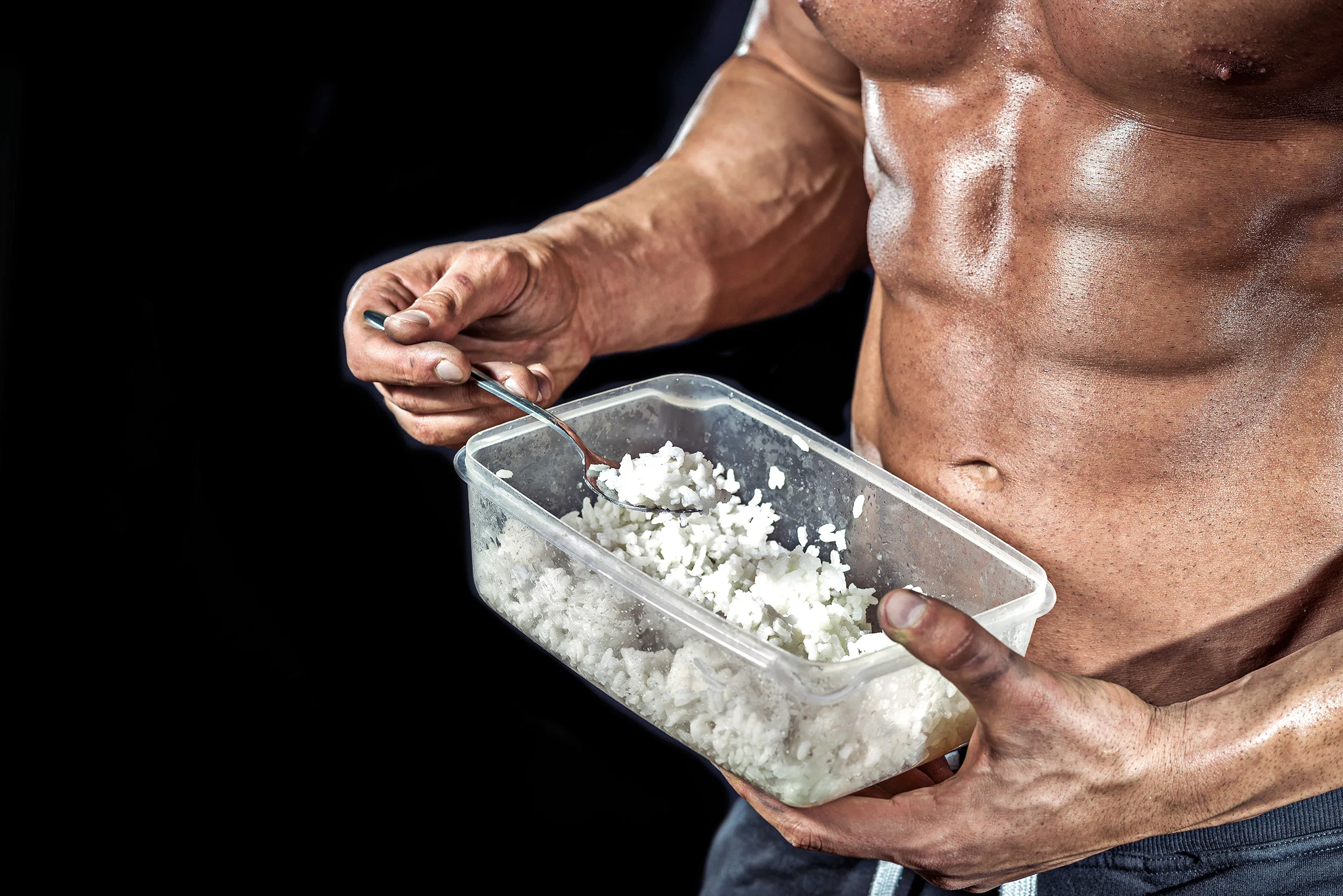Bulking and Cutting: Is It Worth These Health Risks?

Ryan Tomanocy is a CSCS, certified CrossFit Level 1 trainer, and USA Weightlifting sports performance coach. Here, he explains how the bulking and cutting method works, lays out the harmful side effects of this hyped-up approach, and provides an alternative solution (which he uses with all of his clients).

Change the Way You Train
How Bulking & Cutting Works (In Theory)
As bodybuilding became increasingly popular in the 60s, bulking and cutting rose to the top as the BEST way to get muscular and lean when bodybuilding became increasingly popular in the 60s.
Today, nearly 60 years later, it’s still the most popular approach. (Just talk with just about any gym-goer at your local Planet Fitness, Crunch, LAFitness, or other neighborhood globo-gym and if you don’t believe me.)
So how does it work? During a bulking phase, you consume a calorie surplus to enter an anabolic state so your body is able to build muscle tissue. Because bulking often encourages eating just about anything you can get your hands on, your fat mass inevitably increases. This is why the cutting phase follows.
Cutting involves eating at a calorie deficit to create a catabolic state in the body, which leads to weight loss.
And that’s the gist. In most circles, bulking phases last around 4-6 weeks while cutting phases last 6-8 weeks.
Sounds simple and glorious, right? In theory, heck yeah!
However, modern research shows bulking and cutting can cause some real, lasting problems – particularly if your overall goals are health, longevity, and performance.
If you want to feel good, have loads of energy, be active and engage in your beloved hobbies for a long time, maintain a healthy relationship with food, manage stress, stay lean as you age, and have the vitality to play with your kids and grandkids, then bulking and cutting is NOT the best approach.
The Dark Side of Bulking and Cutting
Impact on Mental Health
Recent research shows that bulk and cut cycles are often linked with severe mental health disorders. Eating and Weight Disorders – Studies on Anorexia, Bulimia and Obesity states “engagement in bulk and cut cycles was associated with the stronger drive for muscularity across the sample, and more severe eating disorder and muscle dysmorphia psychopathology among men and women.”
Simply put, folks who engage in bulking and cutting are more likely to have an eating disorder. This is no bueno.
In my experience coaching hundreds of clients, working back from an eating disorder is a long and challenging road with possible serious ramifications on health, fitness, and performance.
The bulk and cut diet pushes many athletes down a frightening path, not to mention the other serious physical and performance-related impacts outlined below.
Impact on Physical Health
Physically, bulking increases your fat stores, making it more challenging for you to lose weight in the future. It also decreases your insulin sensitivity. This means your cells become less responsive to insulin and therefore require more insulin to regulate blood sugar levels, leading to elevated blood sugar levels. This puts you at higher risk for cardiovascular disease, type 2 diabetes, certain types of cancer, and other gnarly diseases.
It doesn’t stop there: sub-optimal insulin sensitivity over longer periods of time also challenges your body’s ability to gain muscle (the complete opposite of the goal of a bulk)!
On the cut phase side, losing weight quickly (over 1 pound per week as most bulk and cut dieters aim for), both increases cortisol and decreases testosterone production in your body.
Essentially, bulking and cutting cycles cause a cascade of changes in your body, raising levels of stress and maiming your ability to maintain and grow healthy muscle tissue.
As far as performance goes, aerobic endurance and maximal oxygen uptake often suffer during bulking, while strength drops off during the cut phase.
Risk of injury also dramatically increases as body mass fluctuates significantly: up during a bulk, and down during a cut.
Health Effects Summarized
Bulking:
- Increased risk of developing disordered eating
- Increased fat stores and number of fat cells
- Potential future weight gain
- Decreased insulin sensitivity
- Increased risk of the following diseases and conditions:
- Cardiovascular disease
- Type 2 diabetes
- High blood pressure
- Sleep apnea
- Certain types of cancer
- Metabolic syndrome
- Non-alcoholic fatty liver disease
- Stroke
- Depression
Cutting:
- Increased risk of developing disordered eating
- Increased cortisol production
- Decreased testosterone production
- Decreased strength levels and greater risk for injuries
- Potential decrease in resting metabolic rate
Ultimately, the severe weight fluctuations from bulking and cutting that we often see celebrated on Instagram and across social-media-land are closely linked to an increased risk of poor health and metabolic syndrome.
Placing the health risks aside, adjusting your nutrition and training to the degree required to perform a bulk and cut is HARD. It requires a lot of time, planning and effort to execute, let alone do it successfully.
In my honest experience, folks often find themselves at the same weight and shape they were before they ever bulked and cut. Or they jump into a “dirty bulk” (mass gainer shakes, no limits, eating everything in sight), gain weight, and fight forever to get lean again.
The Clean Gain Method: Bulk & Cut Altnerative
Don’t worry, there’s a light at the end of the tunnel.
You CAN get muscular, lean, AND have a healthy relationship with your nutrition that supports your health, fitness, and performance goals long-term. WITHOUT bulking and cutting.
The key is to establish nutrition habits you feel good about, are consistent with, and allow you to make progress in the gym, whether your primary goal is aesthetics, strength, athletic performance-based, or something else!
As a performance and nutrition coach, I focus on getting my athletes to this point at a slight caloric surplus. We monitor this together every 4-6 weeks without stressing about MyFitnessPal, Whoop, or any other fitness tracker.
I usually recommend the “Clean Gain” method for most of my athletes.
Again, the focus is promoting a healthy, long-term nutrition approach where you see the results you want (weight loss, muscle gain, sports performance, etc) and avoid the severe weight fluctuations and adverse effects associated with the popular bulk and cut approach.
How To Use The Clean Gain Method
If you want to gain muscle:
1. Establish a longer-term period of muscle gain, 8-12 weeks, and mark an end date on your calendar.
During this time, prioritize nutritious foods and avoid processed foods and added sugars.
2. Increase calories moderately (250 to 500 calories). This prevents excessive weight and fat gain.
3. Follow a structured strength and conditioning program you enjoy and stay consistent (ideally under the eyes of a qualified performance coach).
4. Assess progress at the 8-12 week mark when your calendar reminder from Step 1 indicates!
5. If you’re happy with your progress, reset your calendar reminder for another 8-12 weeks and continue.
If you’re not seeing results:
6. If you’re not gaining muscle at 0.25% to 0.5% of your total body weight per week, increase your calories by 250 and reassess in four weeks. Once you’re gaining at the appropriate rate, start back at Step 1.
If you want to get lean:
7. Decrease your calories moderately (250 to 500 calories) and aim to lose 0.5% to 1% of your body weight per week and reassess in four weeks.
8. Once you’re leaning at the appropriate rate, set your calendar reminder for four weeks at a time and when you’re ready to gain again just start back at Step 1.
9. If you reach a weight and level of body fat you want to maintain, set your calories at a slight 250 surplus and schedule your calendar reminder 6 weeks out to reassess. This gives you the surplus needed to live a fun and active lifestyle AND allows for strength and muscle gain while minimizing any accumulation of fat.
10. If and when you’re ready to start gaining again, just return to Step 1!
Now, there are many caveats to this advice. The most common answer to health, fitness and performance questions is: “It depends.” (I’d be wary of any coach, trainer or guru who speaks in absolutes!)
The bulk and cut diet has worked for some, but that doesn’t mean it’s the only approach. And it’s certainly not the best approach.
Find a performance coach who answers your questions in a way you understand and helps you find the best starting place and approach for your lifestyle.
Coach’s P.S. If you made it this far and my article resonated with you, I want to gift you a complimentary resource to help you get started on your Clean Gain journey! It’s my Sexy Shopping List and it’s FREE for you if you click HERE!
It lays out the categories, approved foods, and healthy snacks I use with my clients. Keep on your fridge, throw it in your purse or wallet, or take it with you on your next visit to the grocery store. I normally reserve this resource for my private clients, but if it keeps you from suffering the effects of the bulk-and-cut trend, it’s all yours.
Find Your Perfect Training Plan
Sometimes all you need to reach your destination on your fitness journey is an expert guide. We've got you covered. Browse from thousands of programs for any goal and every type of athlete.
Try any programming subscription free for 7 days!
Related articles
3 Ways to Improve Mobility Without Stretching
Are you still trying the endless foam rolling and stretching exercises to get that deep squat position? We know how important mobility is for great, or even GOOD performance. All professional athletes have some comfortability in end ranges of motion. So, what else do...
The Ultimate Guide to Lunges: Queen of all Glute Exercises
Your glutes are the largest muscle group in your body. They’re responsible for almost everything your legs do—walking, running, jumping, squatting, lunging, and just standing upright. As far as moving through space goes, strong glutes are the bedrock of overall...
A Beginner’s Guide to Steel Mace Training
Author: Jesse Grund
Mace training will make you a better mover without it’s not confining you to a fixed space or predetermined range of motion. Second, it’s an offset load with 80 to 90 percent of the weight in the head. You’re also constantly having to resist rotation, which creates greater core engagement.

Join the community
Sign up for the latest training news and updates from TrainHeroic
For Coaches
Support
Made with love, sweat, protein isolate and hard work in Denver, CO
© 2023 TrainHeroic, Inc. All rights reserved.







